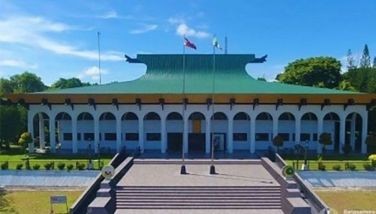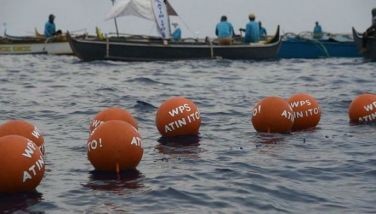Would-be victims are unaware

For a country that is highly prone to natural calamities, the Philippines must urgently strive faster in preparing everyone on how to avoid becoming victims of floods, landslides and the dreaded strong earthquakes.
I missed personally attending a forum organized by the Philippine Communication Society (PCS) which was originally scheduled last Aug. 14, 2024 at the University of the Philippines. I was eager to address the members, guests and participants of the PCS. In fact, I prepared for it, hoping that they will deeply be more active in helping the country become ready and resilient. But the event was postponed to a later date, and I was no longer available for it. Thus, I decided to write what I wanted to discuss. Hopefully, PCS will have another similar activity so that I can participate.
Number one in the list of World Risk Index. I wanted to emphasize that our country must run scared with the fact that we are currently on top of the most vulnerable societies that are exposed to natural hazards.
Belonging to the Pacific Ring of Fire, our archipelago is experiencing more than 20 tremors daily though most of them are less than magnitude three to be actually felt. However, we have 18 active trenches that can potentially unleash stronger earth movements that can be devastating and catastrophic. The disastrous Casiguran 7.3 magnitude earthquake in 1968, for example, caused the collapse of the Ruby Tower in Manila that buried 500 victims.
In 1990, at least 1,500 lives were taken during the Northern Luzon 7.8 magnitude earthquake with its epicenter in Nueva Ecija. The Hyatt Hotel in Baguio City had a pancake effect that buried at least 50 people. More than P12 billion worth of properties and infrastructure were damaged. More recently, in 2013, at least 200 lives perished and 350,000 residents were displaced by the 7.2 magnitude earthquake that hit Bohol, Cebu and nearby provinces.
We are worried with the so-called “the big one” which can be caused by a 7.2 magnitude earthquake. According to the study done by the Japan International Cooperation Agency (JICA) and the Philippine Institute of Volcanology and Seismology (Phivolcs) in 2004, at least 30,000 people can immediately perish and a minimum of 100,000 will be seriously injured. More than 170,000 structures will collapse while the Greater Metro Manila will experience sporadic fires, social unrest and chaos with more than three million people dislocated. There are other scientific studies that have worse projections. Such devastating tremor will be caused by the West Valley Fault System. But then again, we must remember that we have 18 active trenches, which include the West Valley Fault. Others, such as the Manila Trench, can cause an 8.3 magnitude tremor. This is stronger and a killer tsunami is possible.
Other than the threat of strong tremors, we are also confronted with regular visits of at least 20 strong typhoons yearly. Heavy rains and winds usually cause inundations and landslides that destroy properties and, at times, cause deaths. Climate change has even further worsened the difficulties that we collectively face. The southwest monsoon rains have recently become more destructive even in areas, such as the provinces in Mindanao, that traditionally did not experience harrowing torrential rains before.
But to the minds of would-be victims, disaster preparedness is not the priority. This is the biggest challenge to us. How can we communicate effectively and convince everyone that we must all fully prepare?
According to the March 2024 Pulse Asia survey, top of mind concerns of Filipinos, understandably, are gut issues, namely controlling the worsening inflation, increasing wages and fighting graft and corruption. Somewhere in the middle are the welfare of OFWs, addressing criminality and improving peace and order. In the last quadrant would be handling disaster preparedness and climate change.
Therefore, before we can embark on soliciting active and massive participation of would-be victims, we must first catch their attention and perhaps, develop the sense of urgency needed to save the lives and spare their properties from the onslaught of natural calamities.
In our belief system that is essentially molded by our religion, we are resigned to fate as our ultimate redemption from destruction. It is as if affirming the inevitable every time we openly discuss big calamities. So, we tend to block these eventualities from our minds.
Awareness is limited. Understanding is hindered by the prevailing noise and other cluttered concerns that are also legitimate. We can’t relegate economic and financial worries to a lesser struggle. After all, there’s no point in preparing to survive in a possible future calamity if, in the first place, you don’t survive hunger and criminal assault today.
The common road towards fully preparing for the possibility of experiencing devastating natural and human-induced calamities must be paved with widespread and higher level of awareness that shall allow acceptance of the solutions and systems that will save lives and properties when the actual calamities happen.
* * *
Email: arielnepo.philstar@gmail.com
- Latest
- Trending



























